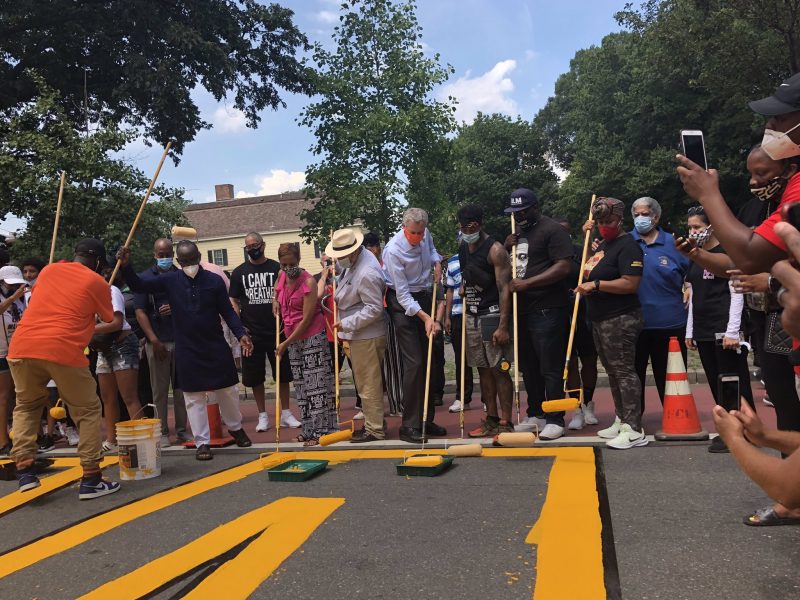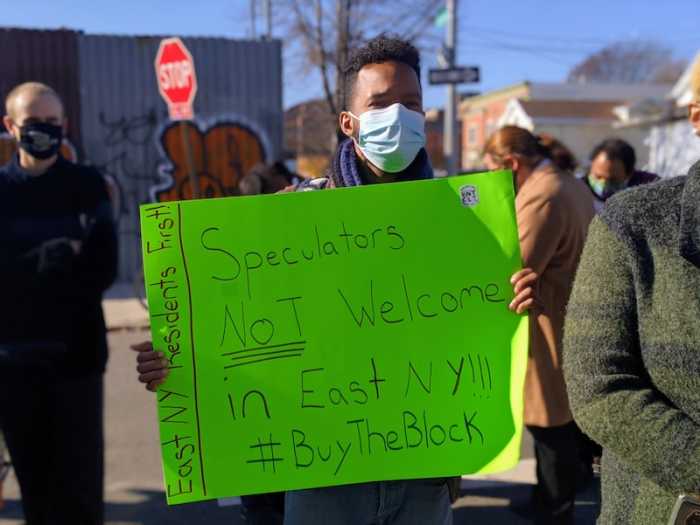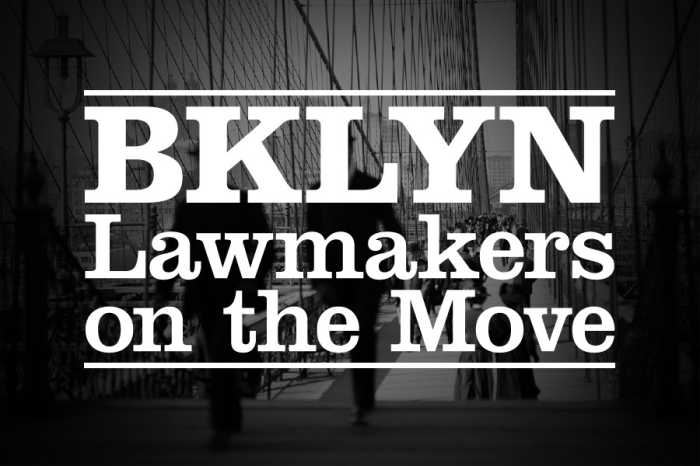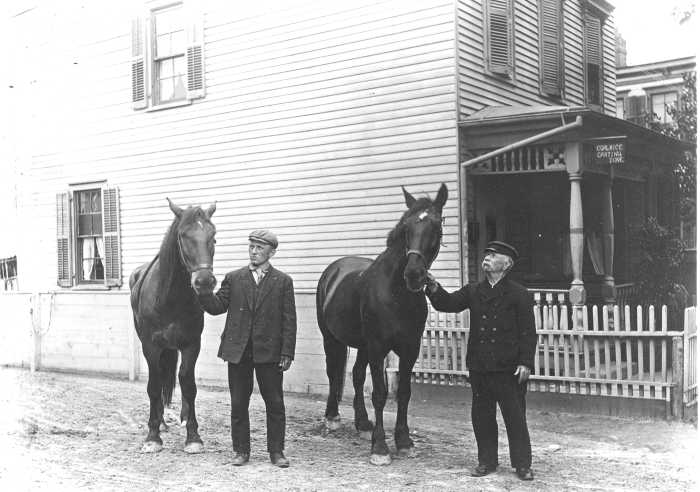Last week, New York City Mayor Bill de Blasio donned a bright orange facemask and joined local lawmakers, the New York City Department of Transportation and community groups in painting a Black Lives Matter mural onto the streets of downtown Jamaica. The act was lauded by many as a show of solidarity with the Black community in Southeast Queens but for one community organizer, it wasn’t enough.
Picking up a paint brush and spreading yellow paint on asphalt isn’t going to address the community’s problems –– especially for youths, said James Johnson, the founder of Opportunities for Southeast Queens Millennials. Instead, he’d rather the mayor put his artistic skills aside and use his power to open community centers. With gun violence on the rise in pockets of Southeast Queens, the youth need somewhere safe to go, he said. Right now they only have access to one community center which is located in Roy Wilkins Park.
“Instead of Black Lives Matter paint, come sit down with some young people in Southeastern Queens and hear what we need instead of pretty much deciding what we need,” said Johnson. “We still are a community center desert.”

In response to the criticism, de Blasio’s Deputy Press Secretary Julia Arrendondo said that the mayor’s actions have been more than symbolic gestures.
“The mayor has put actions to his words to show New Yorkers across the city that Black Lives Matter,” Arrendondo wrote in an email. “He has announced a faster disciplinary process to ensure accountability within the NYPD, reinvested in youth programming, including capital funding to the Parks Department and NYCHA for youth and recreation centers. We have also recently expanded the Crisis Management System to the 103rd precinct in Jamaica, and we’ll continue to work towards investing in community-based solutions to prevent gun violence.”
She did not say specifically whether or not the mayor would consider opening up more community centers in Southeast Queens.
City Councilmember I. Daneek Miller (D-Jamaica), the main organizer of the mural and the week-long series of events to celebrate it, said that he doesn’t want to get into the politics of the mayor’s participation in the mural painting but that Johnson’s sentiment is colored by the fact that he works for New York City Comptroller Scott M. Stringer’s office. The comptroller has a well reported on history of criticizing the de Blasio administration and their relationship is strained.
Johnson emphasized that he was not speaking on behalf of the comptroller’s office but in his capacity as a community organizer and the founder of Opportunities for Southeast Queens Millennials.
Southeast Queens has one community center in Roy Wilkins Park but it’s inconvenient for many neighborhoods in Southeast Queens such as Queens Village, Cambria Heights, Laurelton, Rosedale, Hollis, he said. Instead of pouring more money into the facilities at Roy Wilkins Park, the mayor should fund additional community centers so youths don’t have to take multiple buses and walk long distances to get a center.
And he needs to do it before children get hurt, James said, giving the example of Amir Griffin.
Last October, Amir Griffin, 14, was shot and killed on a basketball court at the Baisley Park Houses, a NYCHA complex located on the western side of Roy Wilkins Park. In the aftermath of his death, community members demanded the mayor allocate more resources towards the community –– including reopening the housing complex’s community center which had closed more than a decade earlier. Within a few weeks the mayor ordered the center reopened and renamed it after Griffin.
To Johnson, the reopening of the community center in the Baisley Park Houses was an example of what the mayor could and should do throughout Southeast Queens instead of painting the Black Lives Matter mural.
According to the NYPD’s Compstat reports, Patrol Borough Queens South has seen a 260% increase in shootings in the last year. Of the 80 shooting incidents year to date in Queens South, 21 occured in the 113th precinct which is where Roy Wilkins Park is located.
“We need to be preventative instead of always being reactionary,’ said Johnson. “Black people know that their lives matter. I think that by increasing resources and giving young people more opportunities, that certainly makes black people feel like their lives matter.”
The push for more community centers as a way to prevent violence has support from local lawmakers as well.
In the Virtual Southeast Queens Town Hall on Monday evening hosted by Stringer and multiple local lawmakers, one community member raised the issue of stopping gun violence in the community.
A solution raised by State Senator Leroy Comrie (D-St. Albans, Cambria Heights, Jamaica, Hollis, Rosedale, Laurelton, Kew Gardens, Queens Village), one of the Southeast Queens lawmakers who participated in the town hall, was more community centers.
“We need to fight to improve the one that we do have and make sure that there are people there that are serious about improving it but we need to build more,” he said.
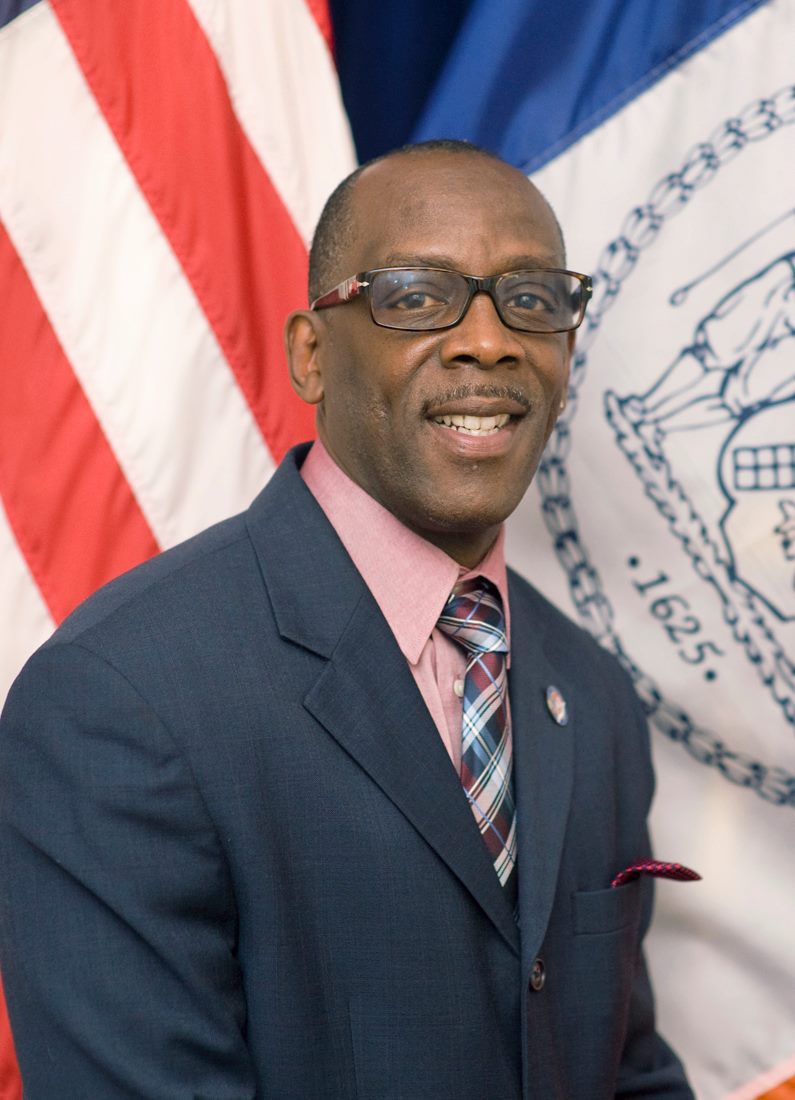
Miller, the city councilmember who spearheaded the mural and the week of celebratory events, said community centers are important but that there needs to be an emphasis on a variety of services such as social services, mental health services, and skills trainings.
“How do we address those issues in a more holistic manner? That’s really what we’re trying to do,” he said. “We do not have the luxury of being so single mindedly focused on a singular issue that we’re going to have to multitask our way up and out of whatever situation we find ourselves in.”
He said that there is always more to be done for Southeast Queens but that what’s been accomplished can’t be overlooked.
Despite the budget constraints this year caused by the coronavirus pandemic revenue shortfall, they were able to secure $92 million in funding for Roy Wilkins Park, he said. The money will go towards turning the park into a multi-purpose state of the art recreational and arts center.
“It is going to mitigate significantly the need for a precinct,” he said referring to the new 116th Precinct station house that the funding was originally earmarked for.
He also said to not underestimate the power of public artwork.
“I would dismiss any notions that this does not have immense value,” said Miller about the mural. “It’s about how do we always keep in the subconscious that these things matter, that these lives matter, and that the struggle continues.”
But to Johnson, raising awareness through the mural isn’t enough.
“Maybe some young people don’t know that Black Lives Matter to them, but we need policy, we need resources for those same young people because once you see a Black Lives Matter mural, what’s next? You go back home, you have no resources, no place to go,” said Johnson. “It’s a nice gesture, but they need to do better.”


